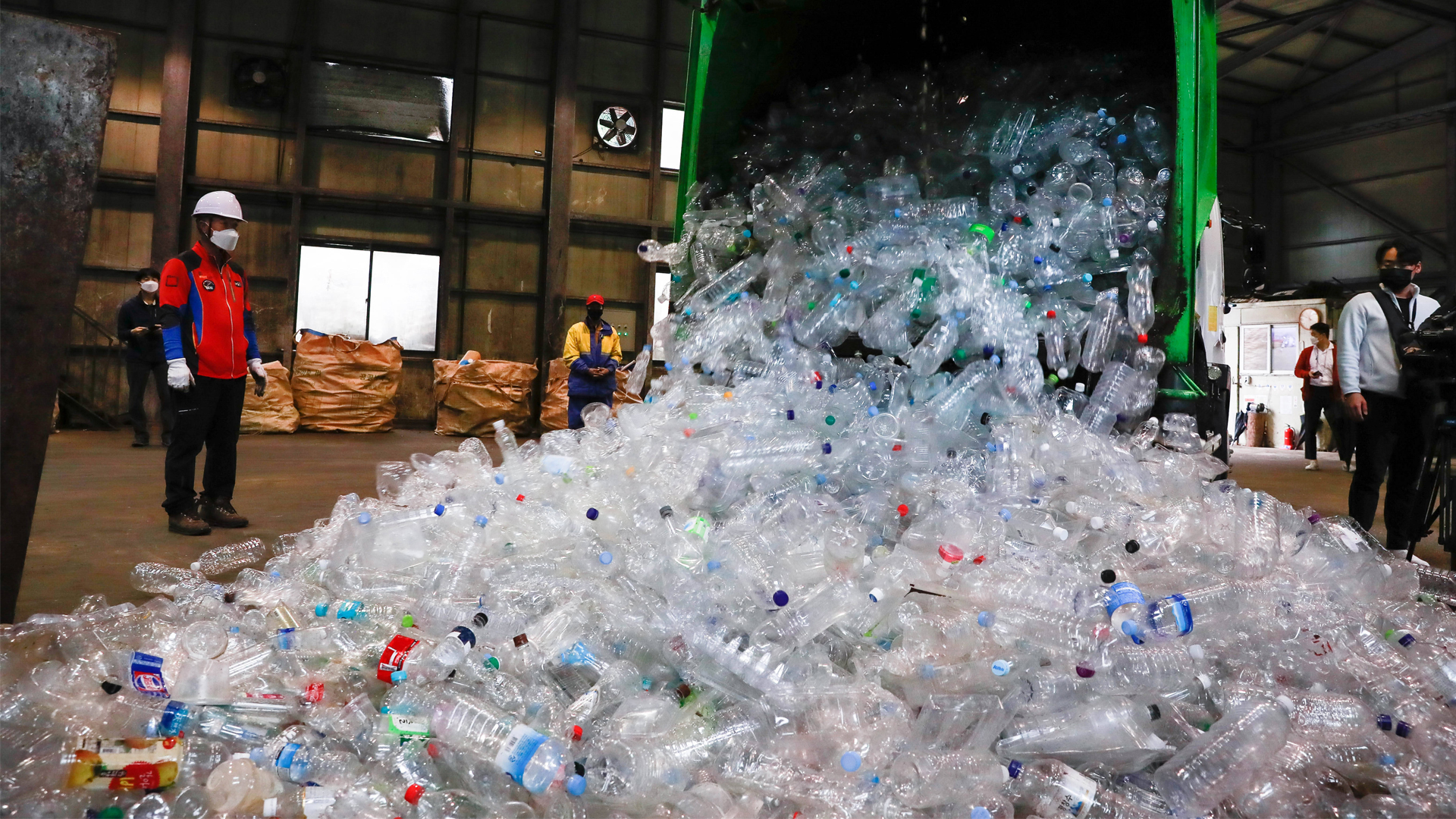
In the plastic recycling industry, efficient classification and reuse are key links, and the application of ultrasonic cleaning machine provides a new solution for the upgrading and transformation of the industry. This article will elaborate on the application advantages of ultrasonic cleaning machine in the plastic recycling industry, the implementation methods of classification and reuse, and practical cases.
Ⅰ. Application advantages of ultrasonic cleaning machine in the plastic recycling industry Ultrasonic cleaning machine is a high-tech cleaning equipment with the advantages of high cleaning efficiency, environmental protection, and energy saving.
In the plastic recycling industry, ultrasonic cleaning machine can solve the following problems of traditional cleaning methods:
1. Low cleaning efficiency: Traditional cleaning methods such as drum cleaning and immersion cleaning have low cleaning efficiency and are difficult to meet large-scale cleaning needs.
2. Low cleanliness: Traditional methods are difficult to achieve deep cleaning, and there are more plastic impurities left after cleaning, which affects the subsequent processing quality and product quality.
3. High energy consumption: Traditional cleaning methods require long-term immersion and drum stirring, which consumes high energy.
Ultrasonic cleaning machines can solve the above problems, and their advantages include:
1. High cleaning efficiency: Ultrasonic cleaning machines use high-frequency vibration and cavitation to achieve deep cleaning in a short time with high cleaning efficiency.
2. High cleanliness: There are few plastic impurities left after ultrasonic cleaning, which improves the quality of subsequent processing and product quality.
3. Low energy consumption: Ultrasonic cleaning machines only need to use a small amount of water, without long-term soaking and drum stirring, which is energy-saving and environmentally friendly.
4. Simple operation: Ultrasonic cleaning machines are easy to operate, can realize automatic cleaning, and reduce manual operation costs.
Ⅱ. Classification and reuse methods of ultrasonic cleaning machines in the plastic recycling industry In the plastic recycling industry, ultrasonic cleaning machines can be used to clean various plastic products, such as plastic bottles, plastic bags, plastic pipes, etc. Through ultrasonic cleaning machines, various impurities and stains in plastic products can be deeply cleaned, classified and reused. The specific methods are as follows:
1. Classification: Classify according to the material, shape, color, etc. of plastic products. Plastic products of different materials require different cleaning agents and cleaning processes when cleaning. Plastic products of different shapes require the selection of appropriate ultrasonic cleaning equipment. Plastic products of different colors need to prevent mixing of colors.
2. Cleaning: Put the classified plastic products into the ultrasonic cleaning machine and set appropriate cleaning parameters according to different cleaning requirements, such as ultrasonic power, frequency, time, etc. Start the ultrasonic cleaning machine and use high-frequency vibration and cavitation to quickly remove stains and impurities on the surface and deep inside the plastic products.
3. Rinse: After cleaning, take out the plastic products and rinse them with clean water to ensure that there are no residual cleaning agents and impurities.
4. Drying: Dry the rinsed plastic products, which can be dried naturally or by drying equipment.
5. Reuse: Reuse the dried plastic products, such as recycled material processing, manufacturing other plastic products, etc.
Ⅲ. Practical cases of ultrasonic cleaning machines in the plastic recycling industry A plastic recycling company used ultrasonic cleaning machines to clean and reuse plastic products, and achieved good results.
The specific cases are as follows:
1. Project background: The company mainly recycles and processes various plastic products, including plastic bottles, plastic bags, plastic tubes, etc. During the processing, plastic products need to be deeply cleaned and classified for reuse.
2. Solution: Use ultrasonic cleaning machine to clean and classify plastic products. According to the different materials, shapes and colors of plastic products, select suitable ultrasonic cleaning equipment and cleaning agents, set appropriate cleaning parameters, and classify and clean them.
3. Implementation effect: Using ultrasonic cleaning machine for cleaning and classification has high cleaning efficiency, high cleanliness, low energy consumption and simple operation. At the same time, through classification and reuse, the utilization rate of plastic products is improved, the production cost is reduced, and the competitiveness of enterprises is improved.
IV. Summary and suggestions The application of ultrasonic cleaning machine in the plastic recycling industry can solve the problems of low efficiency, low cleanliness and high energy consumption of traditional cleaning methods, and improve the utilization rate of plastic products and the competitiveness of enterprises. However, in actual applications, it is necessary to select suitable ultrasonic cleaning equipment and cleaning agents according to the different materials, shapes and colors of plastic products, set appropriate cleaning parameters, and classify and clean them. At the same time, care should be taken to prevent mixing between colors and ensure that there is no residual cleaning agent and impurities. In the future, with the continuous advancement of technology and the continuous accumulation of application experience, the application of ultrasonic cleaning machines in the plastic recycling industry will be more extensive and mature.
Tullker - Makes Cleaning Easier
Tullker Co., Ltd.—an environmentally friendly industrial cleaning solution provider that focuses on ultrasonic industrial cleaning and integrates R&D, production, marketing, and after-sales. In ultrasonic cleaning, vacuum hydrocarbon cleaning, two-fluid cleaning, spray cleaning, A large number of successful cases have been accumulated in the fields of DPF regeneration and cleaning, and are sold in 96 countries around the world.






